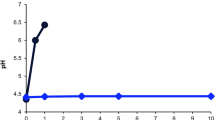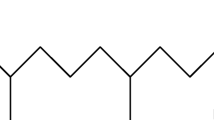Abstract
An objective in the development of ophthalmic formulations is the use of in vitro or animal models that closely resemble the clinical situation. For this reason, experiments with conventional pilocarpine nitrate eyedrops and a depot formulation of pilocarpine nitrate sorbed to poly (butylcyanoacrylate) nanoparticles were carried out. In vitro, the diffusion of pilocarpine through bovine cornea was measured using Edelhauser cells. In vivo, the rabbit aqueous humor concentration of pilocarpine and miosis were determined after application of the above formulations. In addition, intraocular pressure was measured. Since pilocarpine has little influence on intraocular pressure in healthy rabbits, the pressure had to be increased artificially. Three models were employed that are described in the literature, namely, the betamethasone model, the alpha-chymotrypsin model, and the water-loading model. Pilocarpine could be loaded onto nanoparticles by 15% but was rapidly released from the nanoparticles based on the bovine corneal experiment. Nanoparticles only enhanced the aqueous humor concentration at 30 min; this increase, however, led to a considerably extended period of miosis as well as a reduction in intraocular pressure. The duration of the action and the intensity of the response were different among the three models tested. According to the present results, the betamethasone model seems to represent the best correlation to the clinical situation.
Similar content being viewed by others
References
Ahmed I, Gokhale RD, Shah MV, Patton TF (1987) Physico-chemical determinations of drug diffusion across the conjuntiva, sclera, and cornea. J Pharm Sci 76:583–586
Bonomi L, Perfetti S, Noya E, Belluci R, Tommazzoli L (1978) Experimental corticosteroid ocular hypertension in the rabbit. Graefe's Arch Clin Exp Ophthalmol 209:73–86
Drance SM (1960) The significance of the diturnal tension variations in normal and glaucomatous eyes. Arch Ophthalmol 64:494–501
Fitzgerald P, Hadgraft J, Kreuter J, Wilson CG (1987) A gamma scintigraphic evaluation of microparticulate ophthalmic delivery systems: liposomes and nanoparticles. Int J Pharmacol 40:81–84
Flach AJ, Peterson JS, Donahue ME (1986) Ocular hypertensive responses in pigmented rabbits following different methods of waterloading. J Ocular Pharmacol 2:313–317
Harmia T, Kreuter J, Speiser P (1986) Optimization of pilocarpine loading on to nanoparticles by sorption procedures. Int J Pharmacol 33:45–54
Kreuter J, Mills SN, Davis SS, Wilson CG (1983) Polybutylcyanoacrylate nanoparticles for the delivery of [75Se]norcholestenol. Int J Pharmacol 16: 105–113
Lee VHL, Robinson JR (1979) Mechanistic and quantitative evaluation of precorneal pilocarpine disposition in albino rabbits. J Pharm Sci 68:673–684
Lee VHL, Robinson JR (1986) Review: topical ocular drug delivery: recent developments and future challenges. J Ocular Pharmacol 2:67–108
Rendi MA, Ellis PP, Gal J (1984) High-performance liquid chromatographic assay for pilocarpine in aqueous humor. J Chromatogr 336:337–344
Schoenwald RD, Huang HS (1983) Corneal penetration of β-blocking agents. I. Physicochemical factors. J Pharm Sci 72:1266–1271
Sears D, Sears M (1974) Blood-aqueous barrier and alpha-chymotrypsin glaucoma in rabbits. Am J Ophthalmol 77:378–383
Vareilles P, Durand G, Siou G, Le Douarec JC (1979) Le modèle de glaucome expérimental à l'alpha-chymotrypsine chez le lapin: étude histologique. J Fr Ophtalmol 2:561–568
Wood RW, Robinson JR (1984) High-performance liquid chromatographic determination of pilocarpine and pilocarpine acid in ocular tissues. Int J Pharmacol 20:285–293
Wood RW, Li VHK, Kreuter J, Robinson JR (1985) Ocular disposition of poly-hexyl-2-cyano[3-14C]acrylate nanoparticles in the albino rabbit. Int J Pharmacol 23: 175–183
Worthen DM (1972) Scanning electron microscopy after alpha chymotrypsin perfusion in man. Am J Ophthalmol 73:637–642
Author information
Authors and Affiliations
Rights and permissions
About this article
Cite this article
Diepold, R., Kreuter, J., Himber, J. et al. Comparison of different models for the testing of pilocarpine eyedrops using conventional eyedrops and a novel depot formulation (nanoparticles). Graefe's Arch Clin Exp Ophthalmol 227, 188–193 (1989). https://doi.org/10.1007/BF02169795
Received:
Accepted:
Issue Date:
DOI: https://doi.org/10.1007/BF02169795




